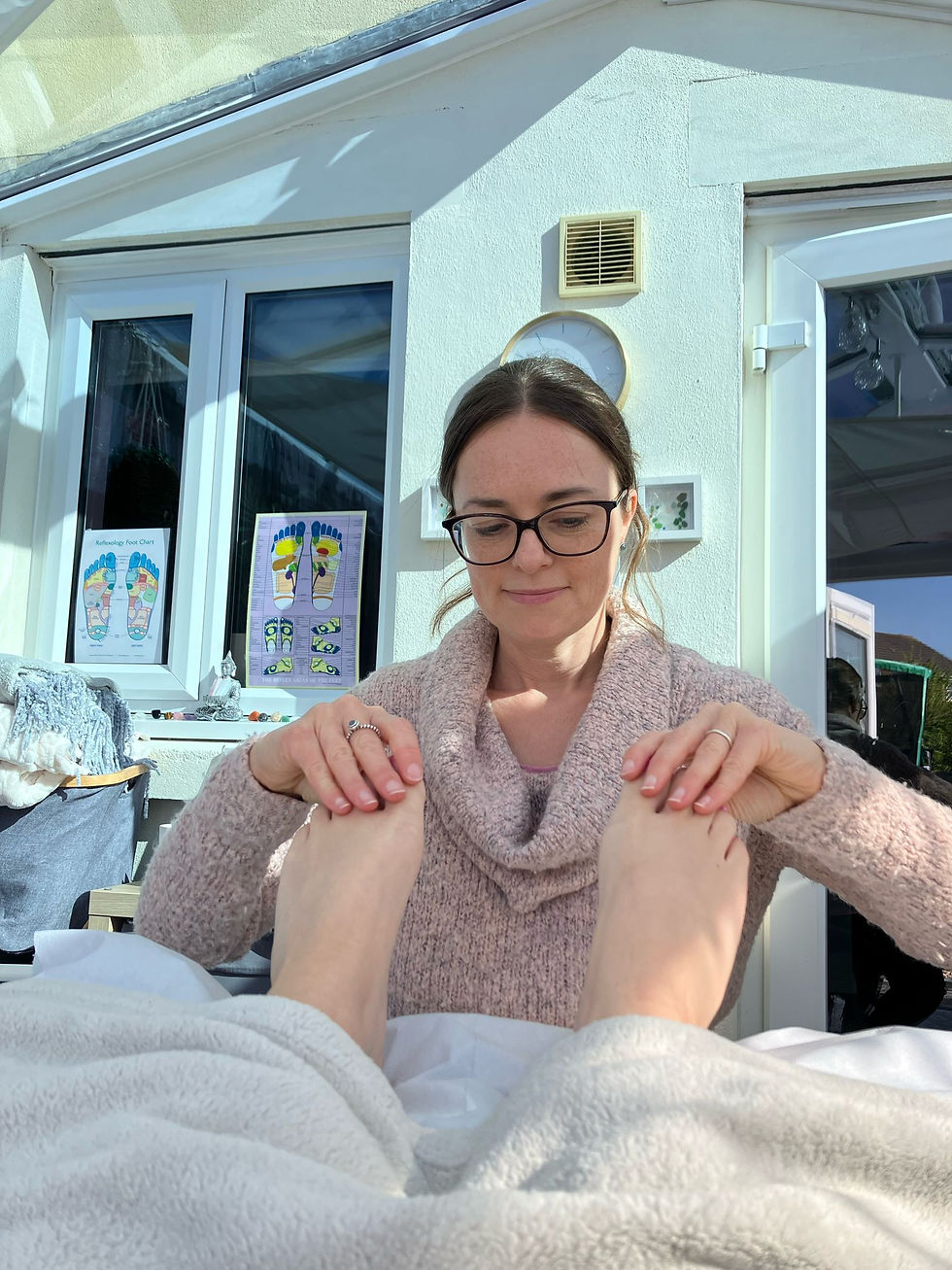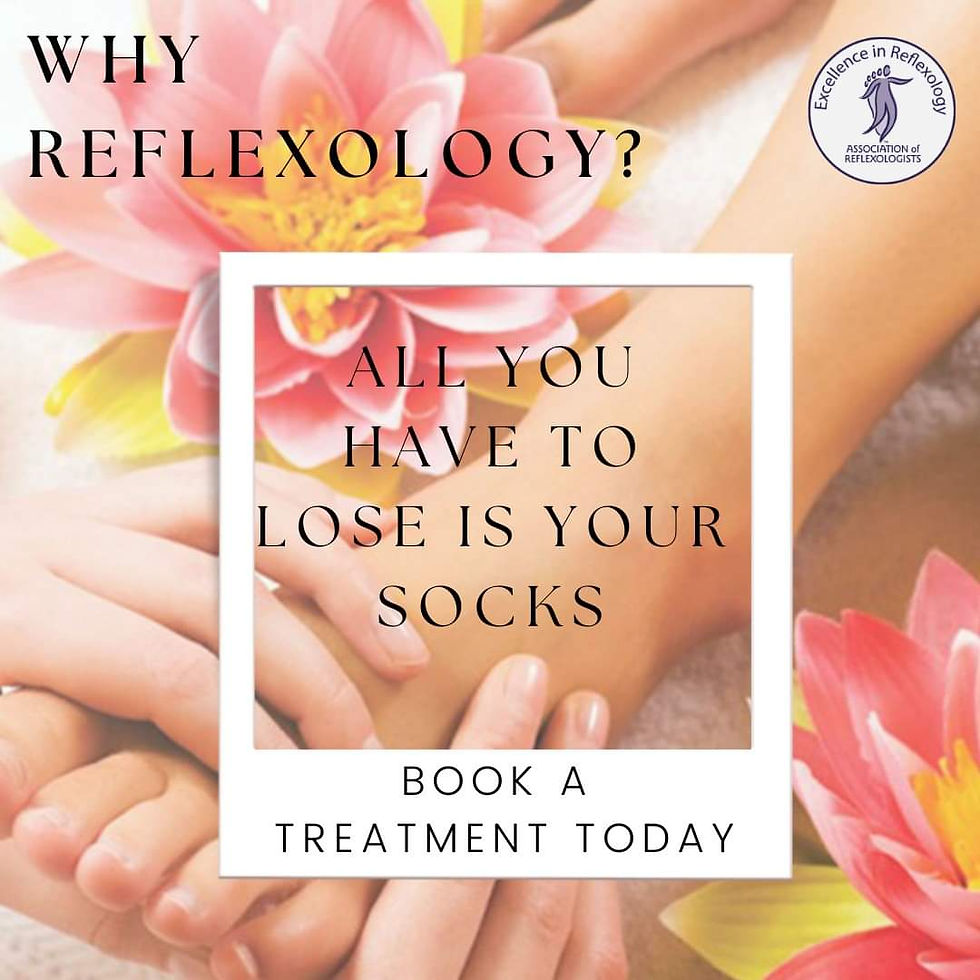










History of Reflexology:
Healing the body through working with the hands or feet is an ancient art that was practiced in a number of early cultures. The earliest evidence was discovered in Egypt in the tomb of Ankomah where pictures show people receiving hand and foot massage asking 'give strength' and 'do not cause pain'.
The ancient Chinese worked hands and feet to maintain good health and prevent disease. They developed traditional Chinese medicine and their theory is that ones 'vital energy' or 'life force' runs through 14 major meridians or channels in the body. 12 of these either begin or end in the tips of the fingers or toes and to massage these areas stimulate the flow of energy and clears congestion, creating harmony in the body
Foot massage plays a significant role Ayurvedic medicine developed in India. The word meaning 'science of life' and encompasses not only physical health but also spiritual and emotional well being.
Reflexology zone therapy came about by Dr William Fitzgerald 1913, he introduced zone therapy to the western world and believed that reflex areas on the hands and feet were linked to areas of the body. Eunice Ingham 1930's was a Physiotherapist and known as the 'mother of modern reflexology'. She further developed zone therapy into what is known today as Reflexology. Using Dr Fitzgerald's theory of zone therapy, she used 10 zones of the body onto the feet placing all the organs and structures inside. In her words a 'principle of dividing the body into 10 zones, aiding us in the ability to locate the reflexes in the feet relative to every part of the body. In this way she developed the 'foot maps' which form the basis of Reflexology. In 1966 an English Nurse Doreen Bayley brought Reflexology to the UK after being trained by Ingham.
What is Reflexology?
Reflexology is a deeply relaxing complimentary therapy suitable for the whole family. It is a non invasive therapy based on the principle that reflexes in the feet, hand and face correspond to different areas of the body. When a stimulus is applied to a reflex point a reaction occurs in the corresponding area, organs, glands, systems and structures within the body. One theory is that good health is based on the uninterrupted flow of energy through out the body. It is believed energy flows through the body in specific channels or pathways. If there is a blockage or congestion in the flow of energy, then the body can be in a state of disease. By using fingers/ thumbs and applying skilled application of pressure to reflex points and zones on the feet and hands to decongest the blockage and encourage smooth flow of energy. This helps encourage the body to promote natural healing and maintain homeostasis. The treatment does not rely on force and as such is a very gentle and safe holistic therapy. Stress is becoming one of the main causes of illness in modern life and can manifest itself in many ways, be it physical, emotional, cognitive, and behavioural. By rebalancing the body, it may help to relieve symptoms of acute or chronic ailments.
Benefits of Reflexology:
Reflexology does not aim to cure, diagnose or prescribe and should not be used as an alternative to seeking medical advice. You are encouraged to tell your health professional you are receiving Reflexology if required. Reflexology acknowledges that everyone is a unique individual, and it is not possible to know in advance how you will react to a treatment. However, people often find it can provide enhanced health and wellbeing for all systems of the body. Reflexology provides support to the whole body with the following benefits:
-
Induces deep relaxation
-
Improves mood
-
Reduce stress and tension
-
Improves sleep
-
Enhances wellbeing













